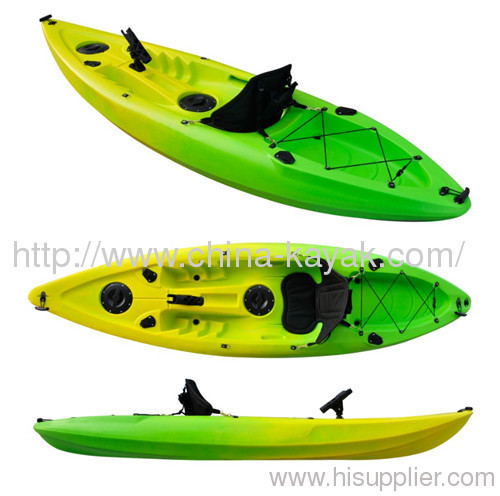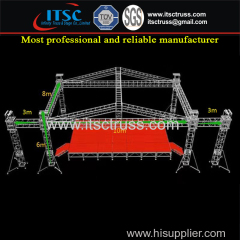Product (140)
- SUP (6)
-
Sit On Top Kayak
(87)

-
Sit In Kayak
(14)

-
Fishing Kayak
(12)

-
Ocean Kayak
(1)

- Recreational Kayak (8)
- Paddles for kayak (3)
- backseat for kayak (3)
- fishing rod holder (3)
- Life Jacket (3)
Blog (8)
News (4)
Credit Report
Products Index
Company Info
Ningbo Coolkayak Co.,Ltd. [China (Mainland)]
Business Type:Manufacturer
City: Ningbo
Province/State: Zhejiang
Country/Region: China (Mainland)
Premium Related Suppliers
Blog
Choosing a Fishing Kayak

When choosing your fishing kayak, there are many factors to take intoconsideration. You should identify what fish species you will target and howfar you will have to paddle to get to the location where you plan to fish.The waterline length of the kayak could be a determining factor. Thewaterline length influences the speed of the kayak. Simply stated – with aproperly designed hull, the longer the waterline, the faster your kayakshould go. With all things being equal, a 16-foot kayak will be faster thana 12-foot kayak. Therefore, if you have to paddle long distances to yourfishing locations, you would be better off with a longer kayak. A longerkayak also tends to tract better, which means that it stays on coursebetter.
Short Length Makes for Ease, All the Way Around
If you transport your kayak by vehicle or on a larger boat to the proximitythat you plan to fish and will not have to paddle very far, a shorter kayakwith more width would better suit your needs. A shorter kayak is not onlyeasier to manage when loading or unloading on your vehicle or yourpowerboat, but it is also more easily portaged, more maneuverable whenfighting a fish, fishing in the mangroves, among obstructions, narrowwinding creeks, and stretches of whitewater.
A kayak with more width is just easier to fish out of. A wider kayak of thesame length will be more stable. It will have a greater area of wettedsurface, which creates more friction on the water and thus more drag, so itwill be slower. It gives you a more stable platform to work from whencasting or fighting a fish and it gives you better access to your gear andtackle because you can move around easier. Some designs will even allow youto stand up and pole giving you a better vantage point to sight fish inshallow water.
A narrow beam and longer waterline that can make a kayak faster may alsoreduce initial stability (how wobbly you feel or not, when you're justsitting in it without moving) and maneuverability, so you have to give upone advantage to achieve another. If you like narrow beam boats, look forone with good secondary stability: this is felt when you lean to the side abit and the boat feels like someone's holding it from tipping over. Thisfine line is why a properly designed kayak is so important
Color
Color can be an important decision depending on the area that you arefishing and the species. Color can be a safety issue. If you are paddling inan area with high-speed powerboat traffic or areas where you need to bevisible you should have a brightly colored kayak (mango or yellow). If youare paddling in backcountry shallow water areas you might prefer to blendinto your surroundings with a more earth tone color such as khaki or Green.
Sit In vs. Sit On Top
Another decision that you will have to make is the choice of a (sit on top)kayak or a (sit inside) kayak. The major difference in the two is verysimple. In a sit inside you actually do sit inside the cockpit of the kayakwith your legs under the deck of the kayak. In a sit on top kayak you wouldsit on top in a cockpit that is molded into the kayak with your legs andbody exposed.
A sit inside kayak designed for fishing is shorter and wider making it morestable and maneuverable than a touring kayak designed for traveling longdistance. In a sit inside kayak, your seat is low thus making your center ofgravity lower and making you feel very stable. A sit inside kayak can befitted with a spray skirt to keep the water out and keep you dry and warm.Many models are designed with larger cockpits openings to give you ampleroom to move, enter or exit. If the hull fills with water, you would have topump or bail it out. If you are near shore you could turn the kayak over onshore and dump the water out.
A sit on top kayak has a self-bailing cockpit with scupper drain holesdesigned to drain water, so if you take on water it drains out of thescupper holes. This is a huge attribute if you are launching through thesurf or paddling in rough water. Another nice benefit of the self- bailingfeature is the fact that rainwater does not accumulate. Sit on top kayaksare very easy to get in and out of and move around in. They allow easyaccess to your gear or tackle while afloat and you can sit with your legshanging over the side and in some models even stand up and pole them with apush pole.
When choosing a kayak for fishing, remember that one of the biggestadvantages of fishing from a kayak is stealth and being able to blend inwith your surroundings. To be accepted by fish, birds and other wildlife asnon-obtrusive, it is important to have a kayak that is quiet with no hullslap or anything that looks, feels or sounds unnatural. After a day on thewater, try to leave things as you found them - hopefully undisturbed.
Pre Page:
Stand Up Paddleboarding FAQs




